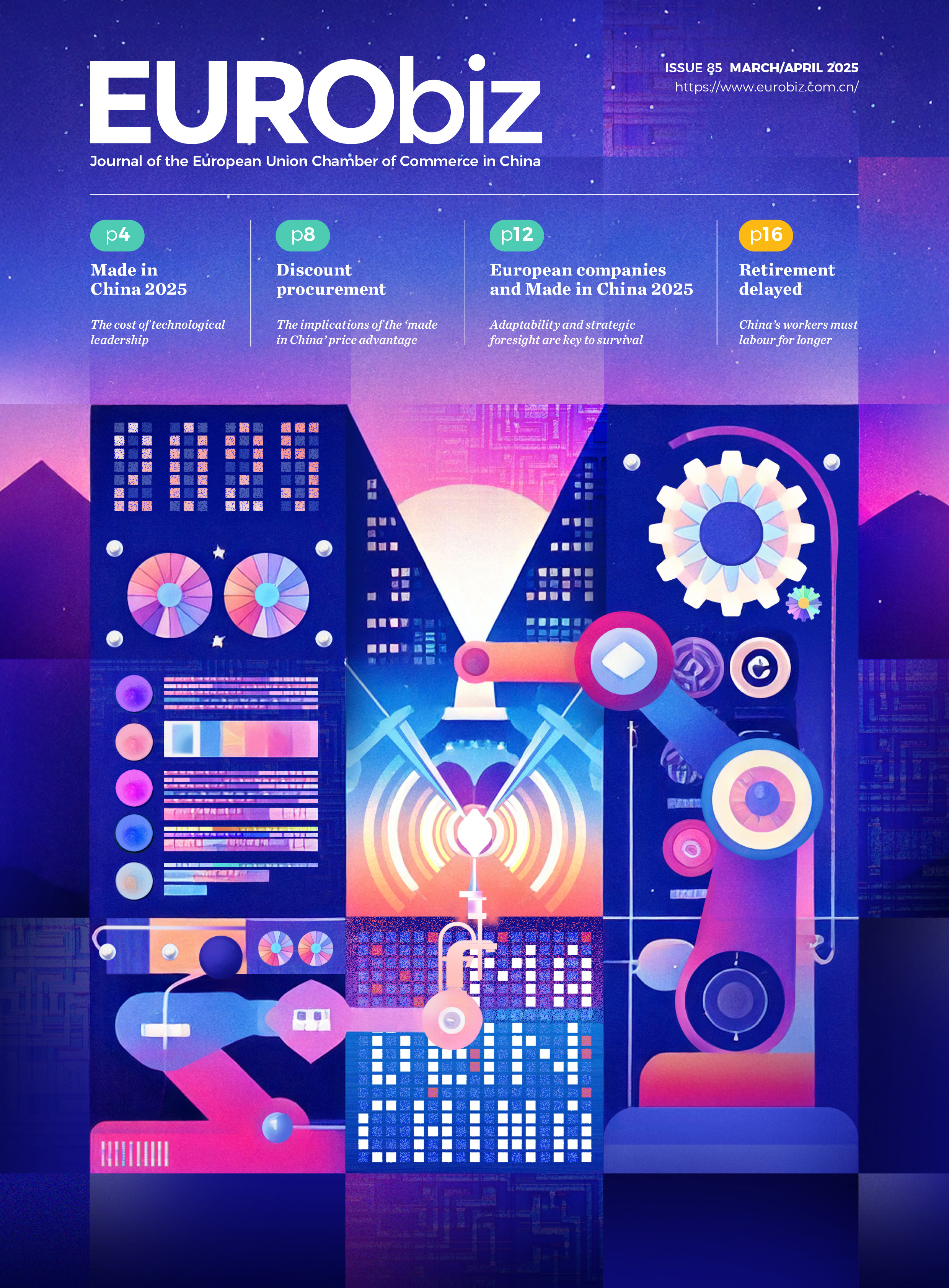
According to the 2025 Report on the Work of the Government released at the beginning of the National People’s Congress, the top task for this year is “vigorously boosting consumption and investment returns and stimulating domestic demand across the board,”[1] a measure intended to boost China’s economy and increase consumption’s share of China’s gross domestic product (GDP).

This differs from 2024 when “striving to modernise the industrial system and developing new quality productive forces at a faster pace” was prioritised.[2] This year, a similar directive, “developing new quality productive forces in light of local conditions and accelerating the development of a modernised industrial system,” was placed second on the list.[3]
While boosting consumption is of long-term importance for China’s economy, its inclusion as this year’s top priority is intended to address what is, hopefully, a relatively short-term economic downturn. Although developing ‘new productive forces’ has fallen to second priority, it continues to represent the most significant long-term strategic ambition of China’s leadership.[4]
‘New productive forces’ was introduced as a term in 2023,[5] but its principles are not new. The European Chamber’s latest thematic report, Made in China 2025: The Cost of Technological Leadership, argues that the introduction of ‘new productive forces’ is essentially a continuation of Made in China 2025 (MIC2025) tweaked and expanded to encompass more industries.[6] China’s ‘future industries’ initiative is one example of this, with targeted industries like MIC2025.[7]
China’s industrial policy ambitions did not start nor end with MIC2025, but the plan—which set specific market share targets in its 10 key sectors—drew global attention in 2015. A decade later, many of the MIC2025 targets have been achieved and China’s ability to manufacture advanced products has dramatically improved, but the plan’s impact is far more nuanced. In some sectors, despite extensive policy support, China has still fallen short of its ambitions.
In sectors that are, in many ways, MIC2025 success stories, like new energy vehicles (NEVs), the plan has led to overcrowded industries struggling with involution and overcapacity. Domestic companies in these sectors, with higher capacity than the domestic market can absorb, have turned to export markets to close the gap, leading the European Union (EU) to take trade defence actions in many of MIC2025’s most successful sectors, including NEVs, wind energy, telecommunications equipment and maritime manufacturing. [8],[9],[10]&[11]
European companies that operate in these sectors have felt the impact directly, through market access barriers, eroding margins and under-utilised capacity.
As China attempts to work its way out of the ongoing economic
slowdown, the long-term effects of industrial policies, from MIC2025 to ‘new
productive forces’, should be front and centre. If MIC2025-style industrial
policy continues, China may be able to meet more of its targets on paper, but
at a hefty price financially and structurally, and with an impact on its trade
relationship with the EU.
[1] Full text: Report on the Work of the Government, Xinhua, 12th March 2025, viewed 20th March 2025, <https://english.www.gov.cn/news/202503/12/content_WS67d17f64c6d0868f4e8f0c10.html>
[2] Full Text: Report on the Work of the Government, Xinhua, 13th March 2024, viewed 20th March 2025, <https://english.www.gov.cn/news/202403/13/content_WS65f0dfccc6d0868f4e8e5079.html>
[3] Full text: Report on the Work of the Government, Xinhua, 12th March 2025, viewed 20th March 2025, <https://english.www.gov.cn/news/202503/12/content_WS67d17f64c6d0868f4e8f0c10.html>
[4] ‘New productive forces’, or ‘xinzhishengchanli’ in Chinese, is also often translated as ‘new quality productive forces’
[5] Explainer: What do “new productive forces” mean?, Xinhua, 21st February 2024, viewed 18th March 2025, <https://english.news.cn/20240221/3e0d1b79a39f4e6c89724049558e1082/c.html>
[6] Made in China 2025: The Cost of Technological Leadership, European Union Chamber of Commerce in China, 16th April 2025, viewed 17th April 2025, <https://www.europeanchamber.com.cn/en/publications-archive/1274/Made_in_China_2025_The_Cost_of_Technological_Leadership>
[7] Opinions of implementation on the promotion of future industrial innovation and development from the Ministry of Industry and Information & Technology and seven other departments, Ministry of Information and Technology, 31st January 2024, viewed 21st March 2025, <https://zwgk.mct.gov.cn/zfxxgkml/kjjy/202401/t20240131_951102.html>
[8] Commission opens first in-depth investigation under the Foreign Subsidies Regulation, European Commission, 16th February 2024, viewed 22nd January 2025, <https://ec.europa.eu/commission/presscorner/detail/en/ip_24_887>
[9] EU imposes duties on unfairly subsidised electric vehicles from China while discussions on price undertakings continue, European Commission, 29th October 2024, viewed 22nd January 2025, <https://ec.europa.eu/commission/presscorner/detail/en/ip_24_5589>
[10] EU starts investigation into Chinese wind turbines under new Foreign Subsidies Regulation, Wind Europe, 9th April 2024, viewed 24th February 2025, <https://windeurope.org/newsroom/press-releases/eu-starts-investigation-into-chinese-wind-turbines-under-new-foreign-subsidies-regulation/>
[11] Commission moves to protect EU mobile access equipment industry from dumped imports, Directorate-General for Trade and Economic Security, 9th January 2025, viewed 24th February 2025, <https://policy.trade.ec.europa.eu/news/commission-moves-protect-eu-mobile-access-equipment-industry-dumped-imports-2025-01-09_en>


Recent Comments